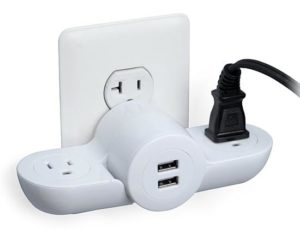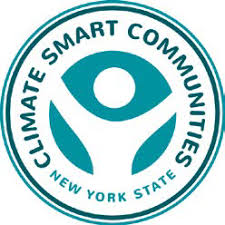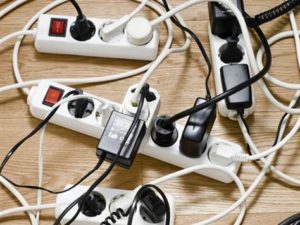Description
Plug and process loads refer to electric equipment that is plugged into an outlet; for example plug-in appliances and electronics including refrigeration, cooking devices, medical treatment equipment, window AC units and portable heaters, TVs, computers, printers, copiers, etc (electrical loads except HVAC, lighting, or service hot water). These loads are the fastest growing source of electricity usage in both residential and commercial buildings and consume approximately one-third of primary energy in commercial buildings. Plug and process loads are projected to increase from 30% to 35% of total commercial building energy consumption between 2010 and 2025 due to an increasing number of plug-in devices and energy consumption of these devices.

1
2
Implementation Phases
Develop an initiative to raise awareness — provide energy meters for residential and commercial customers to measure the amount of power consumed by home and office electronics use, and resources to learn about easy-to-install options for plug load reduction.
Create a program to encourage residents and businesses to replace old energy-inefficient electronics with Energy Star models and easy-to-use intelligent power strips and management systems to completely shut off unused electronics to eliminate wasted energy from phantom loads. A number of commercial products and services are available to assist business owners with this.
Challenges
People don’t realize how much energy plug-in equipment uses and most devices are hard to turn off when not in use (ex: monitors, TVs, game systems, printers, copy machines, etc.)
People are reluctant to replace inefficient equipment that is still operable, so raising awareness of the energy consumption of electronic plug-in devices is critical and plug load management is important to reduce wasted energy. However, this technology must be installed at each outlet that is in use.
Lack of awareness of the latest plug load management technology and software for commercial entities.
Relatively small impact until sufficient participation levels are reached to reduce communitywide energy usage. However, cost savings can be meaningful for individual residential and non-residential consumers.
High upfront costs for electric appliances that are more efficient can be a barrier for equipment replacement. Therefore, installing plug load management devices provide an attractive alternative.
Example Municipalities
Several municipalities have already implemented this action…
- As part of Local Law 88, New York City requires non-residential buildings greater than 25,000 feet to install sub-meters which detail how much energy is being used by tenants in order to encourage these tenants to reduce it over time. It also shows tenants how much electricity their peers are using to further inspire reduced plug load use.
- The city of Emeryville, California intends to reduce plug loads throughout its city, by “activating any energy saving features on your plug load equipment and by using occupancy sensor plug load shut-off devices, such as occupancy sensed power strips.”
Greenhouse Gas (GHG) Reductions
Data
CO2e emission due to usage of electricity for all residential buildings in Bethlehem, NY: 19648 metric tons per year [Bethlehem, NY 2010 Greenhouse Gas Emissions Inventory, Page 16, table1]
Energy saved in percentage when using energy star appliances: 30% [SaveOnEnergy]
Methodology
We calculated the:
- CO2 emissions reduction for all residential units after using energy star appliances.
Result
5890 Metric tons of CO2e is reduced per year when all residential households switch to energy star appliances with reduced plug load.
This results LARGE GHG emissions reductions.

Climate Smart Communities (CSC) & Clean Energy Communities (CEC) Link
This action is also related to CSC and CEC actions for which municipalities can earn points toward certification. Municipalities that develop and implement a formal public campaign can:
CEC Actions:
- Earn 200 CEC points through CEC’s High Impact Action, Community Campaign for Demand Response.
CSC Actions:
- Earn 3 CSC points through CSC’s PE8 Action: Community Campaign for Demand Response.

Co-benefits
There are multiple co-benefits to completing this action, including:
- Greater awareness of cost of ownership of plug-in devices, and in particular electronic gaming devices.
- Accelerated replacement of inefficient devices.
- Economic savings from replacing old energy inefficient appliances and electronics.
Resources
NREL provides a discussion of commercial plug loads.
The United States Energy Department provides several useful documents regarding plug use and the positives associated with limiting plug use:
Sustainable Stanford published a fact sheet on reducing plug load energy consumption.
https://leeduser.buildinggreen.com/forum/process-loads-description
betterbuildings solutioncenter.energy.gov.
https://betterbuildingssolutioncenter.energy.gov/sites/default/files/attachment
s/Decision_Guides_for_PPL_Controls_0.pdf , p. 2.
http://newbuildings.org/sites/default/files/PlugLoadBestPracticesGuide.pdf
https://www.nrel.gov/docs/fy19osti/72028.pdf
https://www.energy.gov/energysaver/articles/how-much-can-you-really-save-energy-efficient-improvements
https://betterbuildingssolutioncenter.energy.gov/sites/default/files/slides/Plug
_Into_Energy_Savings_Slides.pdf
https://sftool.gov/learn/about/426/plug-loads
https://sustainable.stanford.edu/sites/default/files/Plug%20Load%20Fact%20Sh
eet_2018.pdf



